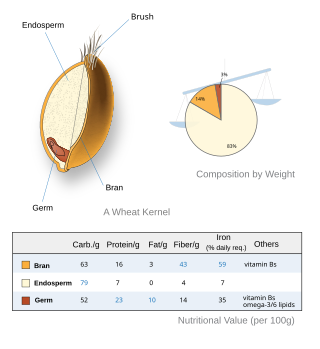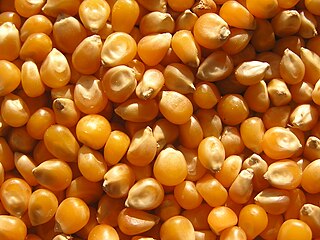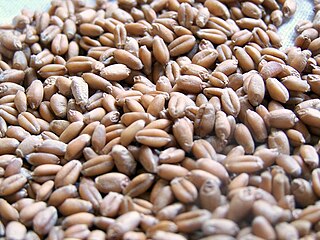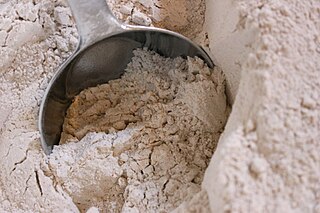Types


Wheat flour is available in many varieties; the categorization is regional, and the same name may have several different regional meanings.
Canada
- Whole wheat flour in Canada may have up to 5% of the grain removed; most of the germ is often removed to prevent the flour from going rancid. [5]
- Whole grain flour contains the whole grain, including bran, germ and endosperm, but not the chaff
Fiji
- Sharp flour is produced in Fiji and primarily used in Indian cuisine.
Indian wheat flours
Indian flours are generally categorized by how much of the grain is stripped away.
- Wheat powder/flour – 'whole grain' (mixture of germ, endosperm and bran)
- Atta flour – mixture of endosperm and bran
- Maida flour – endosperm, bleached; a very white flour, similar to the American bleached flour
- Sooji/rava – coarse-ground endosperm.
Southeast Asia
- Tang flour or wheat starch is a type of wheat flour used primarily in Chinese cuisine for making the outer layer of dumplings and buns. It is also used in Vietnamese cuisine, where it is called bột lọc trong.
United States
American flours are categorized by gluten/protein content, processing, and use.
- All-purpose or plain flour is a blended wheat with a protein content lower than bread flour, ranging between 9% and 12%. Depending on brand or the region where it is purchased, it may be composed of all hard or soft wheats, but is usually a blend of the two, and can range from low protein content to moderately high. It is marketed as an inexpensive alternative to bakers' flour which is acceptable for most household baking needs. [3]
- Bread flour or strong flour is always made from hard wheat, usually hard spring wheat. It has a very high protein content, between 10% and 13%, making it excellent for yeast bread baking. It can be white or whole wheat or in between. [3]
- Cake flour is a finely milled white flour made from soft wheat. It has very low protein content, between 8% and 10%, making it suitable for soft-textured cakes and cookies. The higher protein content of other flours would make the cakes tough. Related to cake flour are masa harina (from maize), maida flour (from wheat or tapioca), and pure starches. [3]
- Durum flour is made from Durum wheat and is suited for pasta making, traditional pizza and flatbread for doner kebab.
- Graham flour is a special type of whole wheat flour. The endosperm is finely ground, as in white flour, while the bran and germ are coarsely ground. Graham flour is uncommon outside of the United States (but see atta flour, a similar product, below). Graham flour is the basis of true graham crackers.
- Instant flour is pregelatinized (precooked) for easier incorporation in gravies and sauces.
- Pastry flour or cookie flour or cracker flour has slightly higher protein content than cake flour but lower than all-purpose flour. Its protein content ranges between 9% and 10%. It is available as a white flour, a whole-wheat flour, or a white flour with the germ retained but not the bran. It is suitable for pie pastry and tarts, some cookies, muffins, biscuits and other quick breads. Flour is shaken through a sieve to reduce the amount of lumps for cooking pastry. [3]
- Whole-wheat flour contains the wheat germ, endosperm and bran
- White flour or refined flour contains only the endosperm
- Whole-wheat white flour is white flour that contains the endososperm, bran, and germ [6]
- Enriched flour is white flour with nutrients added to compensate for the removal of the bran and germ
- Bleached flour is a white flour treated with flour bleaching agents to whiten it (freshly milled flour is yellowish) and give it more gluten-producing potential. Oxidizing agents are usually employed, most commonly organic peroxides like acetone peroxide or benzoyl peroxide, nitrogen dioxide, or chlorine. A similar effect can be achieved by letting the flour oxidize with oxygen in the air ("natural aging") for approximately 10 days; however, this process is more expensive due to the time required. Flour bleached with benzoyl peroxide has been prohibited in the UK since 1997. [7]
- Bromated flour has a maturing agent added. The agent's role is to help with developing gluten, a role similar to the flour bleaching agents. Bromate is usually used. Other choices are phosphates, ascorbic acid, and malted barley. Bromated flour has been banned in much of the world, as bromate is classified as possibly carcinogenic in humans (Group 2B) by the International Agency for Research on Cancer (IARC), [8] but remains available in the United States.
- Self-rising or self-raising flour is white flour that is sold premixed with chemical leavening agents. It was invented by Henry Jones.[ citation needed ] Self-rising flour is typically composed of the following ratio:
- 1 cup (100 g) flour
- 1+1⁄2 teaspoons (3 g) baking powder
- a pinch to 1⁄2 teaspoon (1 g or less) salt
Other
- Spelt flour is produced from the type of wheat called spelt. It is less commonly used in modern cooking than other wheat varieties. It is still used for specialty baking.












